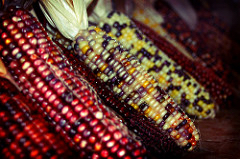Source of article The Jury Room - Keene Trial Consulting.
 Time for another combination post of various things you will want to know that will improve your conversation skills and general life knowledge. We are not saying that it will make your hair shiny or inspire your kids to do their homework. Kernels of wisdom, that’s what they are, in truth.
Time for another combination post of various things you will want to know that will improve your conversation skills and general life knowledge. We are not saying that it will make your hair shiny or inspire your kids to do their homework. Kernels of wisdom, that’s what they are, in truth.
Talking to your kids about stereotypes
The Conversation website has a brief and very good article on how to talk to your children in order to combat stereotypes. They address the best ways to speak to kids at different ages, how to combat generalizations kids might make about whole groups of people, using specific language rather than making general claims, and rebutting gender stereotypes. They even tell you how to have sensitive conversations about generalizations kids bring home so you can actually talk to them about things that are bothering them. Put simply, “words matter”. Here’s how this psychologist-author ends her article:
“With our language, we can help children develop habits of mind that challenge, rather than endorse, stereotyped views of the people around us”.
Miss Manners on rudeness from the leader of the free world
Speaking of talking to our children, Miss Manners is not one to shy away from saying what she thinks (in the most polite and considerate way, of course) and this Atlantic article is no different. She asks, after years of mostly good manners from our political leaders, why did “so many citizens elect a president of the United States who unabashedly—even proudly—violated those expectations?” She answers by saying virtues have been redefined and we now have “alternate virtues” (which will no doubt remind you of the “alternate facts” memes). She thinks that perhaps, after “eight years of a dignified president with an exemplary family life, people are hungry for the pleasures of scandal”. It is an interesting and a bit depressing read.
Hungry or sleepy—judges are more punitive when they are uncomfortable
You probably remember the study showing judges issues harsher sentences when they were hungry. Well, it turns out they are also harsher when they are sleepy (measured on what the researchers coined as “Sleepy Monday”—the Monday after the ‘spring forward’ time change and then compared to other Monday sentences). One of the authors did a TedX talk on sleep deprivation and how it impairs us without us realizing we are impaired. Apparently, judges suffer from it along with the rest of us and their sentencing decisions on “Sleepy Mondays” are reported to be 5% longer than on other Mondays when they were (ostensibly) more well rested.
You know what assuming does…
And yet, we all seem to make assumptions about other beliefs and biases based on seeing or hearing a single biased expression. New research in the Psychological Science journal shows us that women tended to believe a person who expressed a racist belief would also be sexist and men of color thought someone who was sexist was likely also racist.
In other words, participants who saw a sexist, assumed they saw a racist as well. And those who saw a racist, assumed the person described was also sexist.
Question: How often do birds fly that high? Answer: At least once
A few years ago, we were doing pretrial research on a helicopter crash caused by a bird flying way too high (one last time) and the pilot losing control when the controls were not in an intuitive place. Our mock jurors were aghast at the freakish nature of the crash and one of them earnestly inquired just how often birds of that particular type flew that high. The moderator deadpanned, “Well, we know it has happened at least once” and the mock jurors and the observation room of attorney-clients burst into laughter. As it happens, birds are struck by aircraft more than any other type of animal—at least 70 bald eagles in the last decade alone (and that is only counting bird strikes in Alaska, Florida and Michigan).
The Atlantic probably thought they were being pretty novel asking the question in this article—How often do airplanes hit deer? Or alligators? Or bald eagles? Or armadillos?—but that’s what we love about trial consulting. We see and hear it all. But this article has more than even we could imagine (and they have pictures linked if you are ready for some pretty gruesome photos of birds (posthumous). They offer a description of aircraft hitting almost every living animal. Some of them beg for explanations as you will see, but we’ll leave that to someone else.
Also in the past decade in the United States, airplanes have hit bats, coyotes, raccoons, skunks, opossums, dessert hares, prairie dogs, cats, dogs, foxes, bull snakes, turtles, armadillos, alligators, badgers, at least one woodchuck, an elk, an antelope jackrabbit, and several rather ominous-sounding “unknown terrestrial mammals.”
After that list, I take it back. We have not seen “everything”. Just almost everything.
Sanchez DT, Chaney KE, Manuel SK, Wilton LS, & Remedios JD (2017). Stigma by Prejudice Transfer: Racism threatens white women and sexism threatens men of color. Psychological Science
